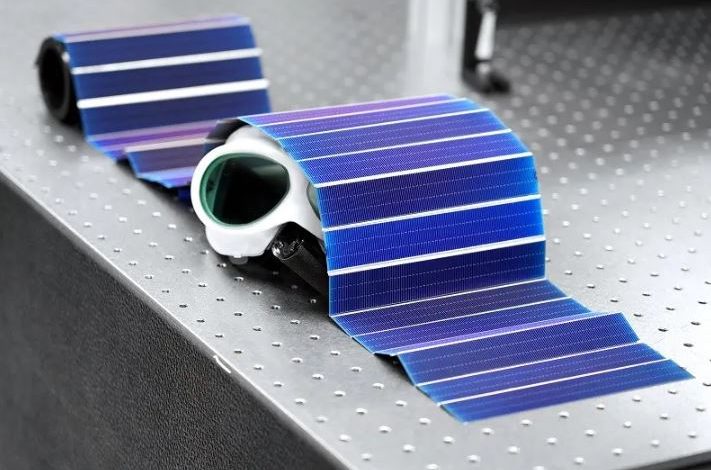FoilMet® transforms rigid solar cells into flexible solar modules

A new way for flexible and efficient solar modules
(Suatainabilityenvironment.com) – Flexible photovoltaic or thin film represents today the greatest promise of energy integration. But flexibility and efficiency do not always coincide for solar cells. The classic rigid crystalline silicon panels are still the best choice. When the goal is to achieve high yields.
A new project signed by the Fraunhofer Institute for Solar Energy Systems ISE is now on the table. Here a group of scientists has created and registered the FoilMet® technology that transforms rigid photovoltaic solar cells into flexible modules.
How do solar cells work? It is a micro-welding laser process capable of connecting solar cells PERC and TOPCon without busbars, using a simple aluminum foil. Therefore without the traditional welding wires or conductive adhesives. The result is a mechanically flexible connection that allows both a shingle arrangement of the solar cell and a positioning “in single file”. Thus saving different materials, starting with the silver that covers the traditional busbars (busbars).
The advantages of FoilMet®
In detail, the technology allows you to directly connect a thin aluminum strip to the conductive elements, binding it to the surface of the silicon nitride in the area between the metal fingers. Among the advantages first of all is speed. As German researchers explain in a press release, the whole process takes less than a tenth of a second per wafer. It also guarantees a very low contact resistance between the foil and the electrodes, thus allowing maximum efficiency of the module. And, without the busbar traditions, you can save up to 30 percent of silver.
Read also From the USA the thermophotovoltaic cell with an efficiency of 40%
“If you connect many small cells instead of a few but large ones, the loss of current and resistance generated in them decreases and the voltage increases,” says Jan Paschen, researcher of the Laser Process Technology group at the Fraunhofer ISE. “Despite these advantageous properties, a solar module consisting of many small cells is more complex and expensive to connect: this is exactly what we are trying to solve with FoilMet® “. The team plans to set up a pilot plant to produce more of the flexible solar modules in a reproducible way. At the same time, the technology will be subjected to a service life analysis.





